Formation de perfectionnement proposant une approche comprenant le diagnostic et le traitement manuel des dysfonctions neurodynamiques et des Points Trigger Myofasciaux dans le cadre des syndromes canalaires myofasciaux du quadrant inférieur. Enseignement basé sur les recherches scientifiques récentes en neurodynamique et en thérapie myofasciale.
 Jan DE LAERE, physiothérapeute, thérapeute manuel.
Jan DE LAERE, physiothérapeute, thérapeute manuel.
 Véronique DEBELLE, physiothérapeute, thérapeute manuelle.
Véronique DEBELLE, physiothérapeute, thérapeute manuelle.
 Christophe LUKAT, Masseur-kinésithérapeute.
Christophe LUKAT, Masseur-kinésithérapeute.
Formation Dry Needling et syndromes canalaires
Formation de perfectionnement proposant une approche comprenant le diagnostic et le traitement manuel des dysfonctions neurodynamiques et des Points Trigger Myofasciaux ainsi que le traitement en Dry Needling des Points Trigger Myofasciaux (PRrM), dans le cadre des syndromes canalaires myofasciaux du quadrant inférieur. Enseignement basé sur les recherches scientifiques récentes en neurodynamique et en thérapie myofasciale.
Les muscles représentent une interface mécanique fondamentale des structures vasculo-nerveuses et peuvent être à l’origine de syndromes canalaires. Leurs contractures encore appelées Points Trigger Myofasciaux peuvent engendrer une compression délétère des paquets vasculo-nerveux.
Le patient présente alors un tableau clinique composé de signes et de symptômes, à la fois dus au syndrome myofascial douloureux comme des douleurs locales exquises et des douleurs ou des sensations référées ressenties par le patient à distance de la contracture ainsi qu’une diminution des compétences musculaires et une altération de la proprioception, et vasculo-nerveux comme des douleurs neuropathiques dues à la perte de viscoélasticité, des troubles du retour veineux dus à la compression vasculaire …
Cette formation basée sur la littérature scientifique récente aborde pour chaque syndrome canalaire : l’anamnèse, le bilan de l’interface mécanique musculaire par des tests de provocation et palpatoires, le bilan neurodynamique par des séquences neurodynamiques et la palpation des structures neurales, le traitement manuel et en Dry Needling des PTrM de l’interface mécanique musculaire, le traitement neurodynamique des structures neurales par des neuroglissements et des neurotensions et finalement, l’auto-traitement.
Nombre mini de stagiaires : 14
Nombre maxi de stagiaires : 16
![]() Lieu de formation : Paris.
Lieu de formation : Paris.
Prérequis :
- Formation Dry Needling puncture sèche.
- Posséder le diplôme du public concerné.
Public concerné et niveau de difficulté :
Kinésithérapeutes :
Physiothérapeutes :
Acupuncteurs :
Médecins :
Dry Needling et syndromes canalaires du quadrant inférieur : une session de 3 jours (23 heures), permettant d’optimiser les acquisitions basées sur les recommandations dont les objectifs pédagogiques sont que le stagiaire :
- Puisse identifier et évaluer la présence d’un syndrome canalaire du quadrant inférieur chez le patient, par l’intermédiaire d’un bilan diagnostique spécifique, en tenant compte des critères diagnostiques ;
- Puisse planifier et mettre en œuvre une démarche thérapeutique appropriée dans les domaines du traitement des dysfonctions neurodynamiques, du traitement des Points Trigger Myofasciaux, de leur traitement combiné et de l’auto-traitement ;
- Connaisse et soit capable de mettre en œuvre les règles d’hygiène et de bonnes pratiques qui régissent la pratique du traitement manuel et en Dry Needling des PTrM ainsi que celle de la dysfonction neurodynamique ;
- Puisse identifier les contre-indications absolues et relatives à l’application du Dry Needling des PTrM et des mobilisations neurales ;
- Puisse adapter son protocole de traitement à la réalité du patient ;
- Connaisse les dangers et maîtrise la mise en œuvre des actions appropriées face aux réactions indésirables ;
- Puisse appliquer au patient les connaissances et les compétences acquises en fonction de son diagnostic.
L’ensemble de ces objectifs doit être atteint pour les syndromes canalaires, les structures neurales et muscles traités au cours de cette formation.
JOUR 1 :
- Syndromes canalaires : généralités – introduction à la neurodynamique.
- Nerf ischiatique : anatomie topographique – palpation – syndromes canalaires – interfaces myofasciales – tableaux cliniques – séquences neurodynamiques – diagnostics différentiels.
- Traitements des syndromes canalaires du nerf ischiatique : Dry Needling et traitement manuel des PTrM des muscles piriforme, jumeau supérieur, grand glutéal et ischio-jambiers – neuro-glissements et auto-traitements.
- Nerf tibial : anatomie topographique – palpation – syndromes canalaires – interfaces myofasciales – tableaux cliniques – séquences neurodynamiques – diagnostics différentiels.
JOUR 2 :
- Traitements des syndromes canalaires du nerf tibial : Dry Needling et traitement manuel des PTrM des muscles soléaire, longs fléchisseurs de l’hallux et des orteils, abducteur de l’hallux, court fléchisseur des orteils et carré plantaire – neuroglissements et auto-traitements.
- Nerfs fibulaires : anatomie topographique – palpation – syndromes canalaires – interfaces myofasciales – tableaux cliniques – séquences neurodynamiques – diagnostics différentiels.
- Traitements des syndromes canalaires des nerfs fibulaires : Dry Needling et traitement manuel des PTrM des muscles long et court fibulaires, long extenseur des orteils, tibial antérieur et court extenseur des orteils – neuroglissements et auto-traitements.
- Nerf fémoral et saphène : anatomie topographique – palpation – syndromes canalaires – interfaces myofasciales – tableaux cliniques – séquences neurodynamiques. Traitements des syndromes canalaires des nerfs fémoral et saphène : Dry Needling et traitement manuel des PTrM des muscles ilio-psoas, sartorius, vaste médial et grand adducteur – neuro-glissements et auto-traitements.
JOUR 3 :
- Nerf obturateur : anatomie topographique – palpation – syndromes canalaires – interfaces myofasciales – tableaux cliniques – séquences neurodynamiques – diagnostics différentiels. Traitements des syndromes canalaires du nerf obturateur : Dry Needling et traitement manuel des PTrM des muscles long et court adducteurs, grand adducteur et carré fémoral – neuroglissements et auto-traitements.
- Nerfs cutanés des régions lombale et abdominale : anatomie topographique – palpation – syndromes canalaires – interfaces myofasciales – tableaux cliniques – séquences neurodynamiques – diagnostics différentiels. Traitements des nerfs cutanés : Dry Needling et traitement manuel des PTrM des muscles érecteurs du rachis, multifides et abdominaux – neuroglissements et auto-traitements.
- Nerf pudental : anatomie topographique – palpation – syndrome canalaire – interfaces myofasciales – tableaux cliniques – séquences neurodynamiques – diagnostics différentiels. Traitements du syndrome canalaire du nerf pudendal : Dry Needling et traitement manuel des PTrM des muscles piriforme et obturateur interne – neuroglissements et auto-traitements.
- Évaluation de la formation.
Déroulé pédagogique de la formation :
A – Méthodologie :
- Questionnaire pré-formation (Q1) dans le mois qui précède la formation présentielle, constitué de tests de concordance de script.
- Restitution au formateur des résultats de ce questionnaire, question par question, au groupe et à chaque stagiaire.
- Partie présentielle d’une durée de 23 heures comportant :
- des échanges sur les résultats du questionnaire pré-formation,
- un face à face pédagogique d’enseignement cognitif, selon les méthodes pédagogiques décrites ci-dessous, principalement centré sur les problèmes ou lacunes révélées par les questionnaires.
- Questionnaire post-formation (Q2), constitué de tests de concordance de script, à l’issue de la formation présentielle.
- Questionnaire post-formation (Q3), constitué de tests de concordance de script, 6 mois après la fin de la formation présentielle.
- Restitution individuelle au stagiaire de l’impact de la formation sur la pratique professionnelle.
- Restitution statistique, au formateur, de l’impact de sa formation sur la pratique des stagiaires.
B – Méthodes pédagogiques mises en œuvre
Différentes méthodes pédagogiques sont employées en alternance, au fur et à mesure du déroulement de la formation :
- Méthode participative – interrogative : les stagiaires échangent sur leurs pratiques professionnelles, à partir de cas cliniques et des résultats des grilles pré-formation (pré-test).
- Méthode expérientielle : modèle pédagogique centré sur l’apprenant et qui consiste, après avoir fait tomber ses croyances, à l’aider à reconstruire des nouvelles connaissances.
- Méthode expositive : le formateur donne son cours théorique, lors de la partie cognitive.
- Méthode démonstrative : le formateur fait une démonstration pratique, sur un stagiaire, devant les participants lors des travaux pratiques.
- Méthode active : les stagiaires reproduisent les gestes techniques, entre eux, par binôme.
Afin d’optimiser la mise en œuvre de ces méthodes, les supports et matériels mis à disposition sont :
- Projection Powerpoint du cours, polycopié et/ou clé USB reprenant le Powerpoint.
- Tables de pratiques, modèles anatomiques osseux et musculaires, matériel de Dry Needling.
BIBLIOGRAPHIE CONTENANT LES RÉFÉRENCES SCIENTIFIQUES ET LES DATES DE PUBLICATIONS DES OUVRAGES :
1. Adnan M, Arsh A, Ali B, Ahmad S. Effectiveness of bent leg raise technique and neurodynamics in patients with radiating low back pain. Pak J Med Sci. 2022 Jan-Feb;38(1):47-51.
2. Bueno-Gracia E, Estébanez-de-Miguel E, López-de-Celis C, Shacklock M, Caudevilla-Polo S, González-Rueda V, Pérez-Bellmunt A. Effect of ankle dorsiflexion on displacement and strain in the tibial nerve and biceps femoris muscle at the posterior knee during the straight leg raise: Investigation of specificity of nerve movement. Clin Biomech (Bristol, Avon). 2020 May;75:105003.
3. Bueno-Gracia E, Malo-Urriés M, Montaner-Cuello A, Borrella-Andrés S, López-de-Celis C. Normal response to tibial neurodynamic test in asymptomatic subjects. J Back Musculoskelet Rehabil. 2021;34(2):243-249.
4. de Ridder R, De Blaiser C, Verrelst R, De Saer R, Desmet A, Schuermans J. Neurodynamic sliders promote flexibility in tight hamstring syndrome. Eur J Sport Sci. 2020 Aug;20(7):973-980.
5. Doughty CT, Seyedsadjadi R. Approach to Peripheral Neuropathy for the Primary Care Clinician. Am J Med. 2018 Sep;131(9):1010-1016.
6. Ekedahl H, Jönsson B, Annertz M, Frobell RB. Accuracy of Clinical Tests in Detecting Disk Herniation and Nerve Root Compression in Subjects With Lumbar Radicular Symptoms. Arch Phys Med Rehabil. 2018 Apr;99(4):726-735.
7. Ellis R, Carta G, Andrade RJ, Coppieters MW. Neurodynamics: is tension contentious? J Man Manip Ther. 2022 Feb;30(1):3-12.
8. Ferreira GE, Stieven FF, Araújo FX, Wiebusch M, Rosa CG, Plentz RD, Silva MF. Neurodynamic treatment for patients with nerve-related leg pain: Protocol for a randomized controlled trial. J Bodyw Mov Ther. 2016 Oct;20(4):870-878.
9. Gattie E, Cleland JA, Snodgrass S. The Effectiveness of Trigger Point Dry Needling for Musculoskeletal Conditions by Physical Therapists: A Systematic Review and Meta-analysis. J Orthop Sports Phys Ther. 2017 Mar;47(3):133-149.
10. González Espinosa de Los Monteros FJ, Gonzalez-Medina G, Ardila EMG, Mansilla JR, Expósito JP, Ruiz PO. Use of Neurodynamic or Orthopedic Tension Tests for the Diagnosis of Lumbar and Lumbosacral Radiculopathies: Study of the Diagnostic Validity. Int J Environ Res Public Health. 2020
Sep 26;17(19):7046
11. Hu HT, Gao H, Ma RJ, Zhao XF, Tian HF, Li L. Is dry needling effective for low back pain?: A systematic review and PRISMA-compliant meta-analysis. Medicine (Baltimore). 2018 Jun;97(26):e11225.
12. Kearns GA, Brismée JM, Riley SP, Wang-Price S, Denninger T, Vugrin M. Lack of standardization in dry needling dosage and adverse event documentation limits outcome and safety reports: a scoping review of randomized clinical trials. J Man Manip Ther. 2022 May 23:1-12.
13. Korkmaz MD, Medin Ceylan C. Effect of dry-needling and exercise treatment on myofascial trigger point: A single-blind randomized controlled trial. Complement Ther Clin Pract. 2022 May;47:101571.
14. Langlois P, Perrochon A, David R, Rainville P, Wood C, Vanhaudenhuyse A, Pageaux B, Ounajim A, Lavallière M, Debarnot U, Luque-Moreno C, Roulaud M, Simoneau M, Goudman L, Moens M, Rigoard P, Billot M. Hypnosis to manage musculoskeletal and neuropathic chronic pain: A systematic review and meta-analysis. Neurosci Biobehav Rev. 2022 Apr;135:104591
15. Liu L, Huang QM, Liu QG, Thitham N, Li LH, Ma YT, Zhao JM. Evidence for Dry Needling in the Management of Myofascial Trigger Points Associated With Low Back Pain: A Systematic Review and Meta-Analysis. Arch Phys Med Rehabil. 2018 Jan;99(1):144-152.e2.
16. López López L, Torres JR, Rubio AO, Torres Sánchez I, Cabrera Martos I, Valenza MC. Effects of neurodynamic treatment on hamstrings flexibility: A systematic review and meta-analysis. Phys Ther Sport. 2019 Nov;40:244-250.
17. Oaklander AL, Mills AJ, Kelley M, Toran LS, Smith B, Dalakas MC, Nath A. Peripheral Neuropathy Evaluations of Patients With Prolonged Long COVID. Neurol Neuroimmunol Neuroinflamm. 2022 Mar 1;9(3):e1146.
18. Pesonen J, Shacklock M, Rantanen P, Mäki J, Karttunen L, Kankaanpää M, Airaksinen O, Rade M. Extending the straight leg raise test for improved clinical evaluation of sciatica: reliability of hip internal rotation or ankle dorsiflexion. BMC Musculoskelet Disord. 2021 Mar 24;22(1):303.
19. Plaza-Manzano G, Cancela-Cilleruelo I, Fernández-de-Las-Peñas C, Cleland JA, Arias-Buría JL, Thoomes-de-Graaf M, Ortega-Santiago R. Effects of Adding a Neurodynamic Mobilization to Motor Control Training in Patients With Lumbar Radiculopathy Due to Disc Herniation: A Randomized Clinical Trial. Am J Phys Med Rehabil. 2020 Feb;99(2):124-132.
20. Pourahmadi M, Hesarikia H, Keshtkar A, Zamani H, Bagheri R, Ghanjal A, Shamsoddini A. Effectiveness of Slump Stretching on Low Back Pain: A Systematic Review and Meta-analysis. Pain Med. 2019 Feb 1;20(2):378-396
21. Rozenfeld E, Sapoznikov Sebakhutu E, Krieger Y, Kalichman L. Dry needling for scar treatment. Acupunct Med. 2020 Dec;38(6):435-439.
22. Sánchez-Infante J, Navarro-Santana MJ, Bravo-Sánchez A, Jiménez-Diaz F, Abián-Vicén J. Is Dry Needling Applied by Physical Therapists Effective for Pain in Musculoskeletal Conditions? A Systematic Review and Meta-Analysis. Phys Ther. 2021 Mar 3;101(3):pzab070.
23. Sousa Filho LF, Barbosa Santos MM, de Farias Neto JP, da Silva Junior WM. The addition of neuro-dynamic exercises to extension-oriented exercises among patients with chronic back-related leg pain: A study protocol. J Bodyw Mov Ther. 2019 Jul;23(3):473-478.
24. Stoychev V, Finestone AS, Kalichman L. Dry Needling as a Treatment Modality for Tendinopathy: a Narrative Review. Curr Rev Musculoskelet Med. 2020 Feb;13(1):133-140.
25. Streckmann F, Balke M, Cavaletti G, Toscanelli A, Bloch W, Décard BF, Lehmann HC, Faude O. Exercise and Neuropathy: Systematic Review with Meta-Analysis. Sports Med. 2022 May;52(5):1043-1065. doi: 10.1007/s40279-021-01596-6. Epub 2021 Dec 29. PMID: 34964950
26. Szewczyk AK, Jamroz-Wiśniewska A, Haratym N, Rejdak K. Neuropathic pain and chronic pain as an underestimated interdisciplinary problem. Int J Occup Med Environ Health. 2022 Jun 8;35(3):249-264.
27. Zha M, Chaffee K, Alsarraj J. Trigger point injections and dry needling can be effective in treating long COVID syndrome-related myalgia: a case report. J Med Case Rep. 2022 Jan 17;16(1):31.
Méthodes d’évaluation de l’action proposée :
- Évaluation des pratiques professionnelles : Q1 (pré-test), Q2 et Q3 (post-tests).
- Questionnaire de satisfaction immédiat et à distance.
- Les fiches individuelles sont stockées sur support numérique et sur papier.
- Les feuilles d’émargement signées par demi-journée sont stockées sur papier et support numérique.
- Un rapport annuel d’activité est envoyé à l’ANDPC.
- Un bilan pédagogique et financier annuel est envoyé à la DREETS (art. R6352-23 et 22 du code du travail).
 Jan DE LAERE :
Jan DE LAERE :
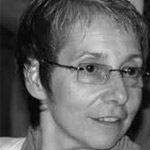
Véronique Debelle :
Les prix indiqués comprennent les cours et support de cours et ne comprennent pas l’hébergement ni le transport.
Délai d’accès : vous pouvez vous inscrire jusque 48 heures avant le début de la formation.
Pour s’inscrire à la formation, merci de choisir une date et un lieu et cliquer sur “inscription”.
Pour le règlement :
- Chèque libellé à l’ordre de Kiné Formations et à adresser à : “KINÉ FORMATIONS” BP. 60254 – 08104 Charleville-Mézières.
- Carte bancaire.
- Virement (RIB sur demande).
Nous étudions au cas par cas toutes les situations de handicap afin d’envisager une intégration dans la formation. Dans le cas contraire, nous prévoyons une orientation vers des organismes appropriés.

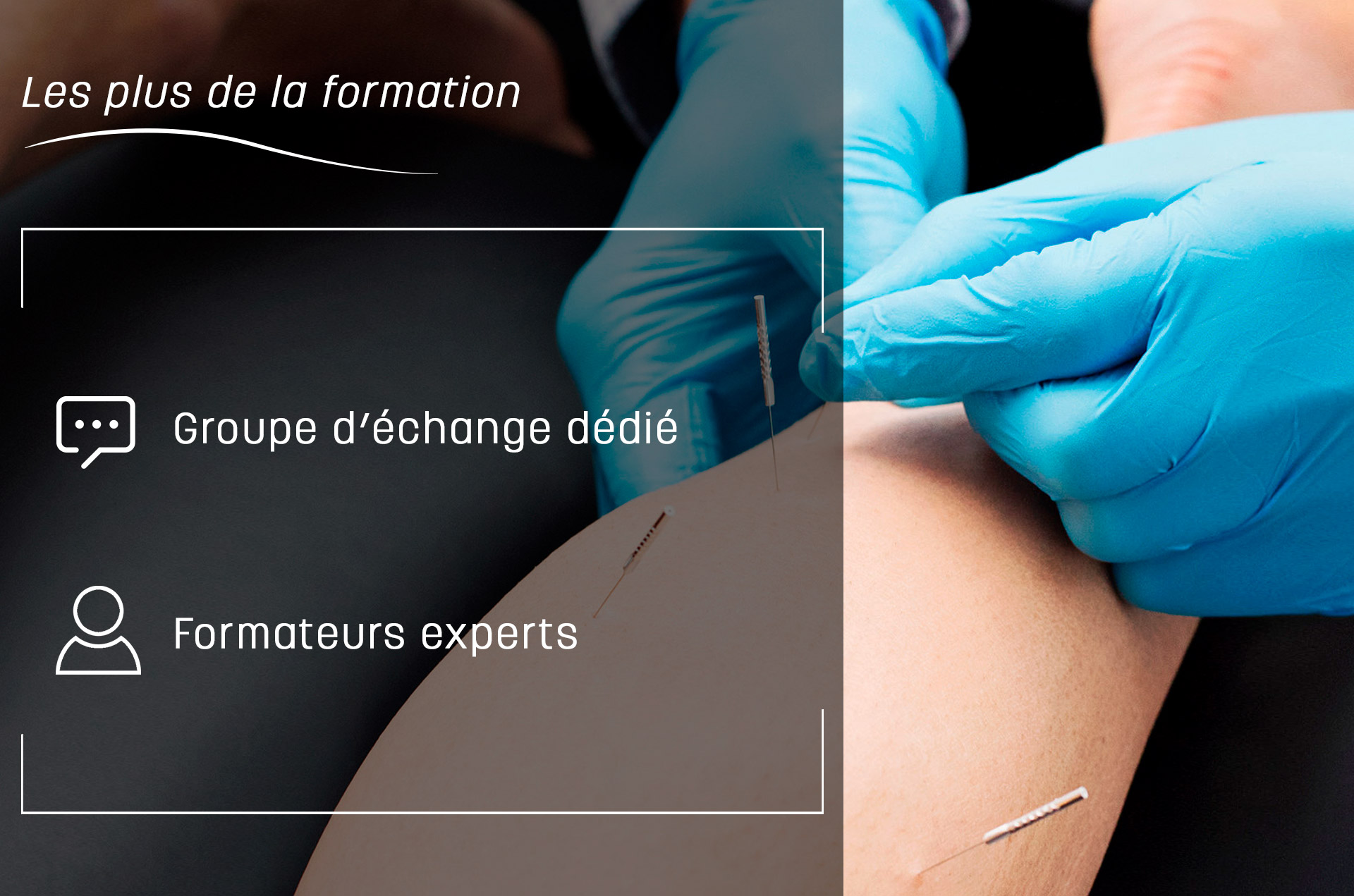



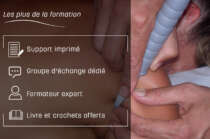
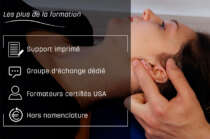
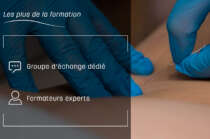
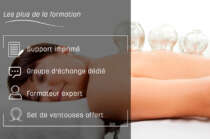

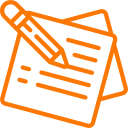




Avis
Il n’y a pas encore d’avis.